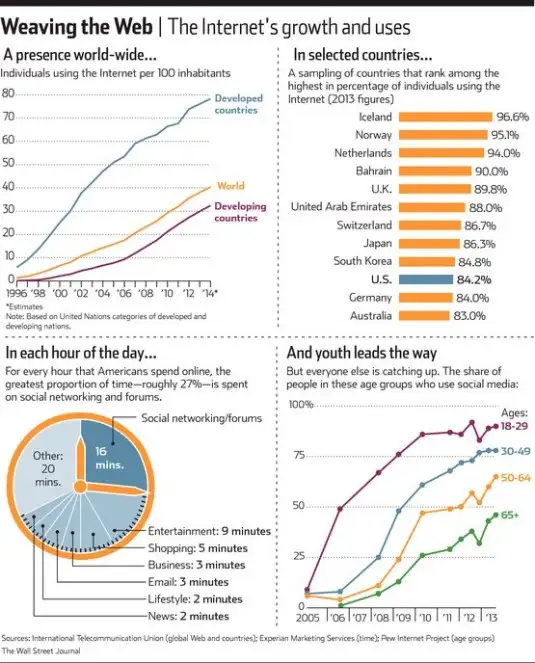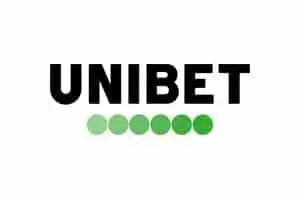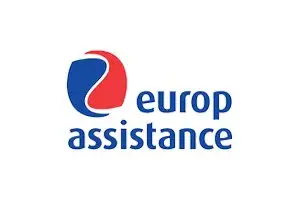Brands focused on rapid global growth need integrated, cohesive messaging across multiple territories and markets. AccuraCast’s multilingual SEO expertise, honed over 20-plus years, enables brands – wherever they are located – to target new customers globally through enhanced organic search visibility.
Multilingual SEO Agency
SEO services for multi-regional brands
Providing the capacity and scale that fast-growing global brands demand, AccuraCast’s multilingual SEO services enable consistent messaging across multiple regions. They incorporate an effective multilingual SEO strategy to establish your brand’s visibility in worldwide markets, as well as expertise in: SEO consulting, SEO implementation, local SEO, digital PR for link building, in-house SEO training
Our Team expertise
AccuraCast’s network of expert linguists covers virtually every language across the globe. Our skilled team includes native speakers of all major European languages who are experienced in managing multilingual SEO for multi-regional websites
Comprehensive multilingual SEO services
At AccuraCast, we believe in enabling brands to reach and connect effectively with clients and prospects, wherever they are located in the world. That means delivering brand messaging in the languages they know and understand best.
Multilingual keyword strategy
Deploying a multilingual keyword strategy demands more than just translation (and a lot more than ChatGPT or Google Translate!). Incorrectly translated keyword lists can result in websites going unnoticed, campaigns being wasted, and business opportunities lost.
It’s essential to target the right keywords in the right languages that will drive local traffic and sales. Our multilingual experts bring a deep understanding of local languages and cultures, combined with an in-depth knowledge of successful multilingual keyword strategies globally.
Technical multilingual SEO
It is important to ensure you get your Technical SEO strategy right to ensure all the pages on your website(s) are indexed and ranked appropriately. Whether you are optimising a B2B SaaS scale-up site for multiple new markets, or implementing a cross-border ecommerce store trading in multiple currencies, getting this strategy right is absolutely crucial.
This is where our technical SEO delivery team excels. Drawing on our decades of experience and vast industry knowledge, we provide the technical SEO skills you need to maximise the effectiveness of your web presence globally.
International content optimisation
Going global often means going local. To localise website content, you need to research local market trends, cultures and customer interests, then create content that is optimised for the audience in that region. This may not be the same content the audience needs in other territories.
Optimising global content for local audiences can often be very resource-intensive. That’s why partnering with AccuraCast makes sense. By working with our multilingual, multi-territory team, we can help you scale your content optimisation in multiple languages for easier and faster deployment.
Multi-language link building
Any successful brand’s website needs high quality editorial links from local sites to improve its chances of ranking higher in search engines.
In order to boost your domain authority in each of your target markets, AccuraCast’s multilingual link building services can be deployed to gain highly authoritative links from news sites, business blogs, and information portals globally.
With our multilingual link building strategy, you can leverage our extensive SEO experience and expertise, as well as local market knowledge, to give your company a competitive edge.
Support in-house teams
If you are looking to add capacity, draw on technical know-how, and upskill your global marketing, content, and PR teams, then our SEO trainning services for in-house teams are for you.
Working as an extension of your team, AccuraCast can deliver add-on SEO services to enhance your brand’s capabilities. We provide keyword research, localised content optimisation or even digital PR for link building in the languages that your team may not cover, or doesn’t have the capacity for.
Market entry strategy
At Accuracast, we have vast experience of working with fast-scaling brands who want to expand overseas, or speed up expansion that is already underway. Our team has expertise in every stage of global business growth. You can draw on our knowledge to qualify the best new markets and gain a deeper understanding of your global audience to implement a robust organic SEO strategy.
We can research your competitors, evaluate market-readiness, identify the total available market, and then build your global SEO strategy via our global business SEO consulting services
Languages we cover include...
- Chinese
- Czech
- Danish
- Dutch
- English
- Finnish
- French
- German
- Greek
- Hindi
- Italian
- Japanese
- Korean
- Norwegian
- Russian
- Spanish
”AccuraCast have so far managed Unibet’s international link building efforts with impressive results, they show great expertise and originality of thought in content marketing.
Rich Cowley, Unibet
What makes AccuraCast the right multilingual SEO agency for you?
100% Ethical SEO® – that delivers long-lasting results and won’t get your site penalised.
Our ethics policy explains clearly what we do and how we work.
Native speakers
Experts at organic search optimisation in multiple languages. We appreciate that cultural differences are often just as important as language.
Comprehensive services
We can fulfil all your SEO needs in-house, and can tap into a network of over 1,000 linguists through our network to help you reach the widest audience.
Expertise
We understand everything to do with search. It’s the core of what we do and we’ve spent more than a decade at the forefront of SEO.
Innovative
We’re known and respected throughout the industry for breakthrough ideas and pioneering thinking. No site structure or domain configuration is too big a challenge.
Featured SEO Multilingual Success Stories
Filter
FAQs about Multilingual SEO
What is multilingual SEO and how does it differ from international SEO?
International SEO focuses on optimizing websites for multiple countries around the world. Multilingual SEO is about optimizing websites and content in different languages with local cultural nuances taken into account.
What are the common challenges implementing multilingual SEO?
The primary challenges of multilingual SEO include an understanding of different languages and cultural sensitivities, content consistency, technical SEO hurdles, and localised differences that affect optimization and user experience.
What is the typical timeframe for seeing results from multilingual SEO efforts with an agency?
Working with an agency on multilingual SEO can take between three and six months to start showing results. Factors influencing the timeframe include competition, market maturity, and ongoing optimisation efforts.
When is machine translation suitable for international SEO?
Machine translation can improve the ranking of foreign language websites, but it’s not a perfect solution. It is important to weigh up speed and cost-efficiency with pitfalls like accuracy and cultural relevance.
Why do we need multilingual SEO?
If your business trades in multiple languages or currencies, and your website(s) display content in multiple languages or in one language but for multiple currencies, you need multilingual SEO for the following reasons:
- Ensure search engine algorithms don’t ignore pages that seem to be duplicates of each other because they have the exact same content, with just minor changes in currency symbol and prices.
- Search engines show your customers the version of your website that is most relevant to them, based on their location and language settings.
Multilingual SEO allows efficient and effective transition into new markets, as well as adaptation to new cultures and languages. Businesses can use multilingual SEO to test the waters – analyse the return on investment in new countries and reactions of customers who live there – before investing heavily in advertising and building the brand.
Just as you use SEO to grow organic traffic in your home market, multilingual SEO is needed to make your site rank higher on organic search engine results, increase the prominence of your brand, and build relationships with other businesses and publishers in order to build popularity.

Dos and don’ts of multilingual SEO
Do:
- Invest resources in technical SEO to ensure your language and country targeting – with hreflang – is accurate
- Build local links from the websites in the country you are targeting
- Conduct extensive research into the target country
- Research competitors in that country
- Separate your content that is targeted to different languages or different countries
Don’t:
- Assume Google is the only search engine that people use. Nearly 1 billion people use search engines such as Baidu, Yandex and Naver
- Use multiple languages on the same page
- Assume that the same word in the same language means the same thing in different countries. (UK English, US English, Indian English)
Should multiple languages be hosted on the same domain?
Whether you host multiple languages or regional sites on the same domain or invest in country specific domains, your site can be optimised to rank appropriately, so long as you follow the search engine guidelines. The decision, therefore, boils down to business needs and resources.
The absolute best practice is to have country-coded top level domains (ccTLD) hosted in that specific country, with clearly targeted directories or subdomains for each language that is spoken in that country.
Although country-specific domains allow clear geo-targeting and easy separation of sites, they can be expensive to maintain, and might have limited availability. Country-specific domains also require more supporting infrastructure and investment in SEO. For instance, you would need to invest in link building for each domain.
Hosting multiple languages on the same domain makes setting up the website easier and needs less support than country-specific domains. Google’s official guidelines for multi-regional sites provide clear instructions to declare the the language and locale for each section of the site to search spiders.
Both options work well and are effective, therefore, it depends on the time and resources the business can invest. Working with an international SEO agency that can meet specific requirements can help ease the burden for in-house marketing teams.
Do US and UK versions of the site create duplicate content?
The short answer here is “yes”. If you do not change the content and simply alter prices and country-specific data, then your US pages could be perceived as mere duplicates of your UK pages, which may result in Google choosing to drop one and list only the UK or US page on the organic search engine listings.
However, there are ways to avoid this problem. The most obvious solution, of course, is to differentiate the content – write for your audience, provide different text, vary your blog posts and differentiate your products. Each market is interested in different content, therefore, it is important to create new content not only to avoid duplicates, but to engage each of your target markets specifically.
That being said, differentiating all your content isn’t always the most practical solution. In most situations, the simplest option is to either use a country-specific domain, sub-domain or directory and then declare the rel=”alternate” hreflang=”x” tag.
International sub-directories or country-specific sub-domains?
This decision is down to the business’ specific requirements and resources. As with the issue of duplicate content, it is up to the webmaster to cater to their own needs.
We offer international SEO consulting as well as international growth strategy consulting for businesses faced with these sort of questions.
How to use hreflang to indicate language / region correctly for Google?
Multiple versions of a page for different regions, such as English pages for the UK, USA, and Canada, may be considered duplicates. The leading search engines recognise a special HTML tag called hreflang, which identifies different localised variations of the same page.
Using hreflang and other location and language indicators within the HTML header will help search engines like Google point users to the most appropriate version of your page by language or region.
Google might still deliver the correct language versions of your page, based on a user’s language and location browser settings, but it is usually best to explicitly indicate your language- or region-specific pages.















